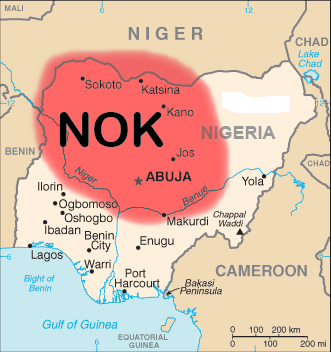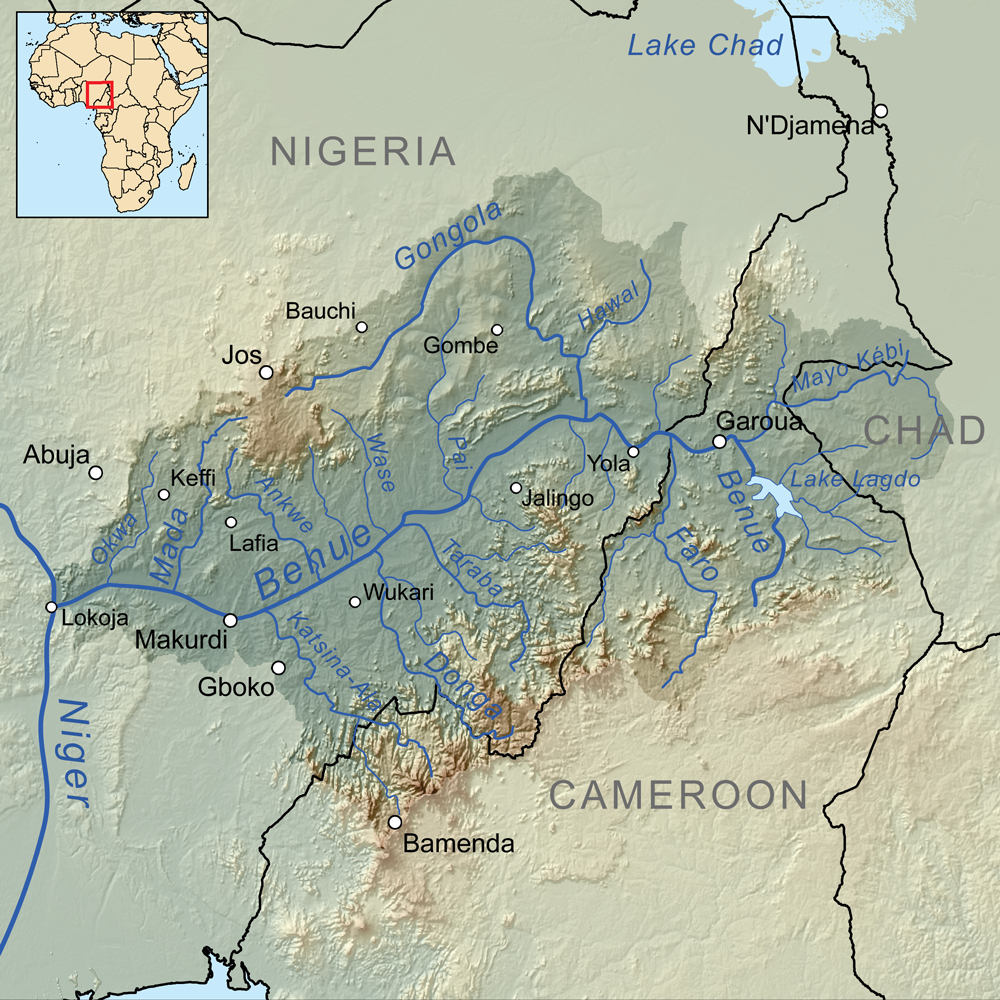|
Wase (Nigeria)
Wase (pronounced: Wasay) is a town and Local Government Area (LGA) of Plateau State, Nigeria, situated some 216 km south east of Jos, the Plateau State capital. It shares its name with the nearby Wase River. The population of the LGA was 159,861 people as of 2006, with an urban area of 1750 km². History The region of Wase was first inhabited by the Jukuns, centered around the traditional walled town of the same name. At first, Bashar was at it present location. She contained a chiefdom ruled by the Jukun in Mavo and lastly by Tarok in Kadarko this comes after the second crises between Tarok and Fulani. The Local Government Area was predominantly inhabited by Hausa Fulani, Burmawa and Jukun tribes. The minor tribes are the Tarok, and Basherawa. Later on Wase became part of the British Royal Niger Company protectorate (later Northern Nigeria) following the arrival of British troops in 1898. Wase was a part of Plateau Province when it was established in 1926, and th ... [...More Info...] [...Related Items...] OR: [Wikipedia] [Google] [Baidu] |
Africa-China Relations
Sino-African relations or Afro-Chinese relations are the historical, political, economic, military, social, and cultural connection between mainland China and the African continent. Little is known about ancient relations between China and Africa, though there is some evidence of early trade connections. Highlights of medieval contacts include the 14th-century journey of Moroccan scholar Ibn Battuta, the 14th-century visit of Somali scholar and explorer Sa'id of Mogadishu and the 15th-century Ming dynasty voyages of Chinese admiral Zheng He. Modern political and economic relations between mainland China and the African continent commenced in the era of Mao Zedong, following the victory of the Chinese Communist Party (CCP) in the Chinese Civil War. At the turn of the 21st century, the modern state of the People's Republic of China (PRC) built increasingly strong economic ties with Africa. In 2013, it was estimated that one million Chinese citizens were residing in Africa ... [...More Info...] [...Related Items...] OR: [Wikipedia] [Google] [Baidu] |
Inselberg
An inselberg or monadnock () is an isolated rock hill, knob, ridge, or small mountain that rises abruptly from a gently sloping or virtually level surrounding plain. In Southern Africa a similar formation of granite is known as a koppie, an Afrikaans word ("little head") from the Dutch diminutive word ''kopje''. If the inselberg is dome-shaped and formed from granite or gneiss, it can also be called a bornhardt, though not all bornhardts are inselbergs. An inselberg results when a body of rock resistant to erosion, such as granite, occurring within a body of softer rocks, is exposed by differential erosion and lowering of the surrounding landscape. Etymology Inselberg The word ''inselberg'' is a loan word from German, and means "island mountain". The term was coined in 1900 by geologist Wilhelm Bornhardt (1864–1946) to describe the abundance of such features found in eastern Africa. At that time, the term applied only to arid landscape features. However, it has sin ... [...More Info...] [...Related Items...] OR: [Wikipedia] [Google] [Baidu] |
Pelican
Pelicans (genus ''Pelecanus'') are a genus of large water birds that make up the family Pelecanidae. They are characterized by a long beak and a large throat pouch used for catching prey and draining water from the scooped-up contents before swallowing. They have predominantly pale plumage, except for the brown and Peruvian pelicans. The bills, pouches, and bare facial skin of all pelicans become brightly coloured before the breeding season. The eight living pelican species have a patchy global distribution, ranging latitudinally from the tropics to the temperate zone, though they are absent from interior South America and from polar regions and the open ocean. Long thought to be related to frigatebirds, cormorants, tropicbirds, and gannets and boobies, pelicans instead are now known to be most closely related to the shoebill and hamerkop, and are placed in the order Pelecaniformes. Ibises, spoonbills, herons, and bitterns have been classified in the same order. Fossil ev ... [...More Info...] [...Related Items...] OR: [Wikipedia] [Google] [Baidu] |
Federation Of Nigeria
The Federation of Nigeria was a predecessor to modern-day Nigeria from 1954 to 1963. It was a British protectorate until its independence on 1 October 1960. British rule of Colonial Nigeria ended in 1960, when the ''Nigeria Independence Act 1960'' made the federation an independent sovereign state. Elizabeth II remained head of state as the Queen of Nigeria, as well as other dominions and commonwealth realms. Her constitutional roles in Nigeria were exercisable by the Governor-General of Nigeria. Three people held the office of governor-general during the whole existence of the Federation of Nigeria: # Sir John Stuart Macpherson 1954 - 15 June 1955 # Sir James Wilson Robertson 15 June 1955 - 16 November 1960 # Dr. Nnamdi Azikiwe 16 November 1960 – 1 October 1963 Sir Abubakar Tafawa Balewa held office as prime minister (and head of government). The Federal Republic of Nigeria came into existence on 1 October 1963.Nigeria Republic Act 1963, c. 57 The monarchy was abolished and ... [...More Info...] [...Related Items...] OR: [Wikipedia] [Google] [Baidu] |
Northern Nigeria
Northern Nigeria was an autonomous division within Nigeria, distinctly different from the southern part of the country, with independent customs, foreign relations and security structures. In 1962 it acquired the territory of the United Kingdom, British Northern Cameroons, which voted to become a province within Northern Nigeria. In 1967, Northern Nigeria was divided into the North-Eastern State, North-Western State, Kano State, Kaduna State, Kwara State, and the Benue-Plateau State, each with its own Governor. History Prehistory The Nok culture, an ancient culture dominated most of what is now Culture of Northern Nigeria, Northern Nigeria in prehistoric times, its legacy in the form of terracotta statues and megaliths have been discovered in Sokoto State, Sokoto, Kano (city), Kano, Birnin Kebbi, Birinin Kudu, Nok and Zaria. The Kwatarkwashi Culture, Kwatarkwashi culture, a variant of the Nok culture centred mostly around Zamfara State, Zamfara in Sokoto Province is thoug ... [...More Info...] [...Related Items...] OR: [Wikipedia] [Google] [Baidu] |
Royal Niger Company
The Royal Niger Company was a mercantile company chartered by the British government in the nineteenth century. It was formed in 1879 as the ''United African Company '' and renamed to ''National African Company'' in 1881 and to ''Royal Niger Company'' in 1886. In 1929 the company became part of the United Africa Company, which came under the control of Unilever in the 1930s and continued to exist as a subsidiary of Unilever until 1987, when it was absorbed into the parent company. The company existed for a comparatively short time (1879–1900) but was instrumental in the formation of Colonial Nigeria, as it enabled the British Empire to establish control over the lower Niger against the German competition led by Bismarck during the 1890s. In 1900, the company-controlled territories became the Southern Nigeria Protectorate, which was in turn united with the Northern Nigeria Protectorate to form the Colony and Protectorate of Nigeria in 1914 (which eventually gai ... [...More Info...] [...Related Items...] OR: [Wikipedia] [Google] [Baidu] |
Jukun People (West Africa)
Jukun (''Njikum'') are an ethno-linguistic group or ethnic nation in West Africa . The Jukun are traditionally located in Taraba, Benue, Nasarawa, Plateau, Adamawa, and Gombe States in Nigeria and parts of northwestern Cameroon . They are descendants of the people of Kwararafa . Most of the tribes in the north central of Nigeria trace their origin to the Jukun people and are related in one way or the other to the Jukuns . Until the coming of both Christianity and Islam, the Jukun people were followers of their own traditional religions. Most of the tribes, Alago, Agatu, Rendere, Goemai in Shendam, and others left Kwararafa when it disintegrated as a result of a power tussle . The Jukuns are divided into two major groups; the Jukun Wanu and Jukun Wapa . The Jukun Wanu are fishermen residing along the banks of the river Benue and Niger where they run through Taraba State, Benue State and Nasarawa State. The Wukari Federation, headed by the Aku Uka of Wukari, is now the main cent ... [...More Info...] [...Related Items...] OR: [Wikipedia] [Google] [Baidu] |
Hausa Fulani
Hausa may refer to: * Hausa people, an ethnic group of West Africa * Hausa language, spoken in West Africa * Hausa Kingdoms, a historical collection of Hausa city-states * Hausa (horse) or Dongola horse, an African breed of riding horse See also * * Hausa music, the music of the Hausa people * Kannywood or Hausa movies, the Hausa-language film industry of Northern Nigeria * Xhosa (other) Xhosa may refer to: * Xhosa people, a nation, and ethnic group, who live in south-central and southeasterly region of South Africa * Xhosa language, one of the 11 official languages of South Africa, principally spoken by the Xhosa people See als ... {{disambiguation Language and nationality disambiguation pages ... [...More Info...] [...Related Items...] OR: [Wikipedia] [Google] [Baidu] |
Wase Rock
Wase Rock (Hausa: Gwauron Dutse) is a massive dome shaped rocky inselberg found near Wase town in Wase Local Government Area of Plateau State in central Nigeria. Standing alone in the Wase plain, it achieves a remarkable height of about above the surface of the neighbouring surroundings and above sea level. History Wase Rock is a trachyte neck rising from the floor of the Benue Rift, 160 km SE of Jos. It is all that remains of a once giant volcano. The rock, with its vertical sides, has its summit split into two by a narrow chasm and the base is surrounded by talus slopes (scree)Blackwelder, C. (1942). '' The Geologic of Africa '', p. 232. Appearance It has been described as a volcanic plug by geographers. It is visible for a radius of due to its height. It is one of the only five breeding places for the Rossy white pelican birds in Africa. The government now protects about of land around the rock as a bird sanctuary and for wildlife Wildlife refers to d ... [...More Info...] [...Related Items...] OR: [Wikipedia] [Google] [Baidu] |




